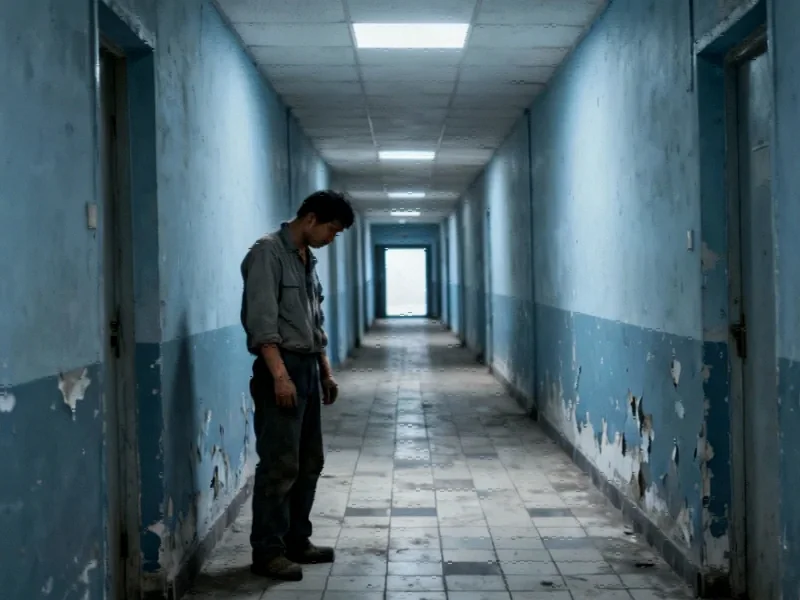The Human Cost of Policy Changes
Across the United States, stories like Maria’s are becoming increasingly common. The 48-year-old single mother from Nicaragua had been cleaning Florida schools for $13 per hour, barely enough to support herself and her 11-year-old son in shared housing with five other families. When her work authorization under the humanitarian parole program was revoked, she joined thousands of immigrants suddenly without legal status or income. “I feel desperate,” Maria confessed, requesting anonymity due to deportation fears. “I have $5 in my account. I’m left with nothing.”
These personal tragedies represent just one facet of a broader economic transformation occurring as immigration policies shift dramatically. The termination of work permits for Cubans, Haitians, Venezuelans, and Nicaraguans has created ripple effects throughout the labor market, affecting both workers and employers who depend on their contributions.
Economic Consequences Across Sectors
The impact extends far beyond individual stories. According to economists, the reduction in foreign workers comes at a particularly challenging time for the U.S. economy. Hiring has already slowed significantly, averaging just 29,000 jobs per month from June through August, compared to the 400,000 monthly average during the post-pandemic hiring boom of 2021-2023.
Lee Branstetter, an economist at Carnegie-Mellon University, explains the broader implications: “Immigrants are good for the economy. Because we had a lot of immigration over the past five years, an inflationary surge was not as bad as many people expected.” The current policy shifts threaten to reverse these benefits, potentially reigniting inflationary pressures while slowing economic growth.
The Congressional Budget Office has already downgraded its forecast for U.S. economic growth this year to 1.4 percent, citing fallout from immigration and trade policies. This represents a significant reduction from the 2.5 percent growth recorded in 2024 and reflects growing concerns about the sustainability of current economic expansion.
Workforce Gaps in Critical Industries
The elimination of work permits has created particularly severe challenges in sectors that traditionally rely on immigrant labor. Goodwin Living, a Virginia nonprofit providing senior housing and healthcare services, exemplifies this struggle. The organization was forced to lay off four Haitian employees after their work authorizations were terminated.
“That was a very, very difficult day for us,” CEO Rob Liebreich recalled. “It was really unfortunate to have to say goodbye to them, and we’re still struggling to fill those roles.” With 60 percent of its 1,500 employees coming from foreign countries, Goodwin Living faces ongoing challenges in finding qualified nurses, therapists, and maintenance staff.
Similar workforce shortages are appearing in agriculture, where recent technology and automation can only partially compensate for missing labor. John Boyd Jr., who farms 1,300 acres in southern Virginia, notes that immigration enforcement actions are compounding existing challenges from trade disputes and fluctuating commodity prices. “These are people who are in this country doing hard work that many Americans don’t want to do,” he observed, dismissing suggestions that domestic workers might fill these roles.
Broader Economic Implications
The consequences extend beyond immediate labor shortages. Research from Wendy Edelberg and Tara Watson of Brookings Institution, along with Stan Veuger of the American Enterprise Institute, suggests that the loss of foreign workers could reduce monthly job growth to “near zero or negative in the next few years.”
This projection aligns with emerging trends in sectors dependent on immigrant labor. Construction companies, for instance, have eliminated 10,000 positions since May. Jed Kolko, a former Commerce Department official, warns that “the longer-term effects are more serious because immigrants traditionally have contributed more than their share of patents, innovation, productivity.”
These immigration policy shifts represent a fundamental reorientation of America’s approach to workforce development and economic growth. The changes affect not only low-wage sectors but also industries requiring specialized skills, as evidenced by the raid on a Hyundai battery plant in Georgia where 300 South Korean technical experts were detained.
International Relations and Business Climate
The enforcement actions have generated international concern, particularly among key allies and trading partners. Following the Georgia battery plant incident, South Korean President Lee Jae Myung warned that companies might reconsider American investments if their workers face visa challenges or detention risks.
This creates tension with administration efforts to attract foreign manufacturing investment, highlighting how industry developments in one area can conflict with policy objectives in another. The situation illustrates the complex interplay between immigration enforcement and economic competitiveness in a globalized economy.
Further complicating matters, the Trump administration’s sudden increase of H-1B visa fees from as little as $215 to $100,000 sends what Dany Bahar of the Center for Global Development describes as “a signal” to global talent. “It tells global talent: ‘You are not welcome here,'” Bahar noted, pointing to potential long-term damage to America’s ability to attract skilled professionals.
Looking Forward: Adaptation and Innovation
As businesses grapple with these workforce challenges, many are turning to technological solutions and process innovations. The current environment may accelerate adoption of automation and efficiency improvements across multiple sectors, from agriculture to manufacturing to services.
These related innovations represent one potential response to persistent labor shortages. However, economists caution that technology alone cannot immediately replace the human capital being lost through restrictive immigration policies. The transition period may involve significant economic disruption and adjustment costs.
Meanwhile, the administration itself acknowledges potential consequences. A Labor Department filing noted that “the near total cessation of the inflow of illegal aliens combined with the lack of an available legal workforce results in significant disruptions to production costs and threatens the stability of domestic food production and prices for U.S consumers.”
As America navigates these complex market trends, the fundamental tension between immigration control and economic needs continues to shape policy debates. The outcomes will likely influence everything from inflation rates to international competitiveness, making this one of the most significant economic stories of our time.
The situation continues to evolve rapidly, with implications for workforce management, international relations, and economic policy. As businesses and workers adapt to the new reality, the full impact of these immigration changes on America’s economic trajectory remains to be seen.
This article aggregates information from publicly available sources. All trademarks and copyrights belong to their respective owners.
Note: Featured image is for illustrative purposes only and does not represent any specific product, service, or entity mentioned in this article.


